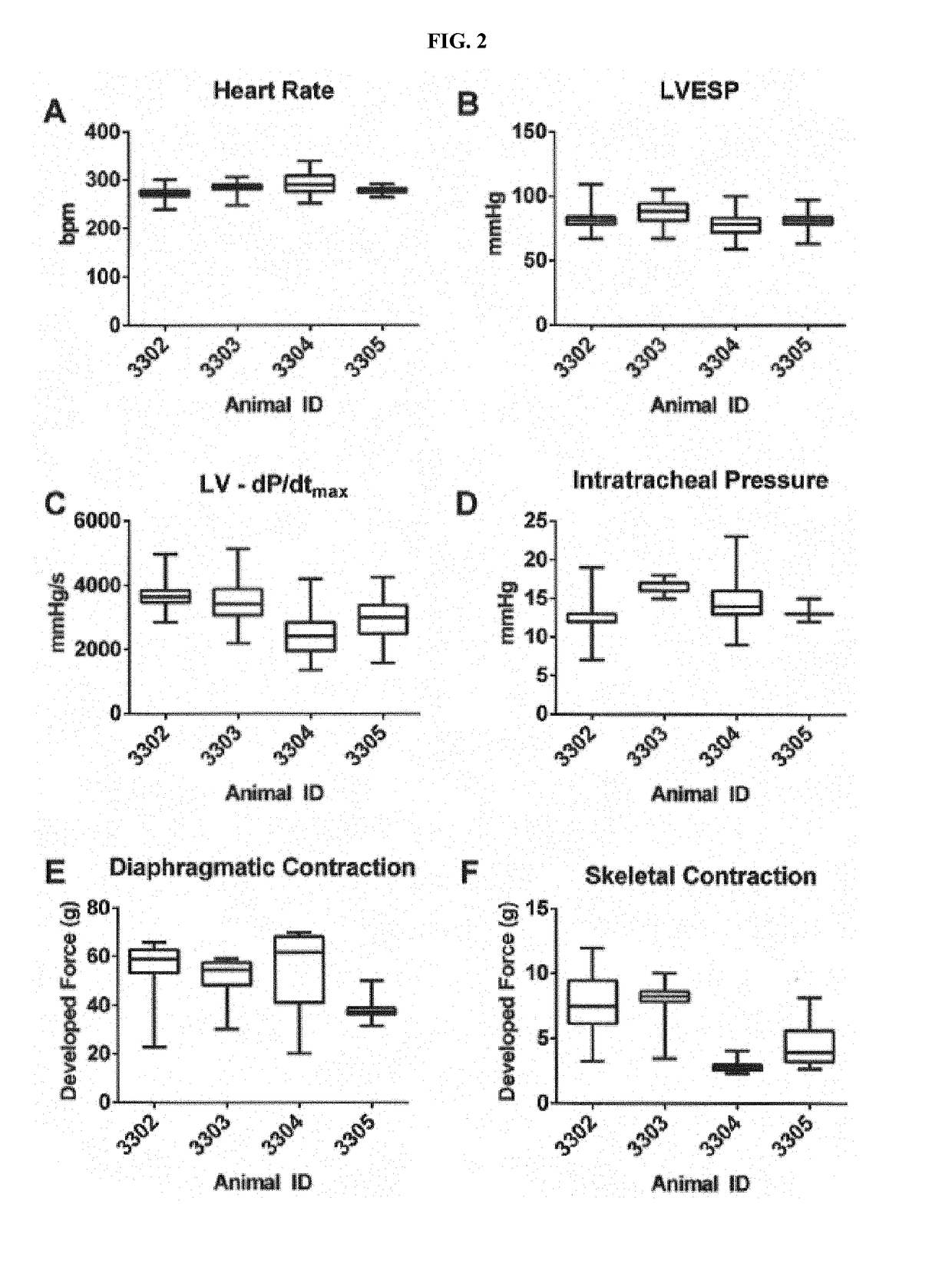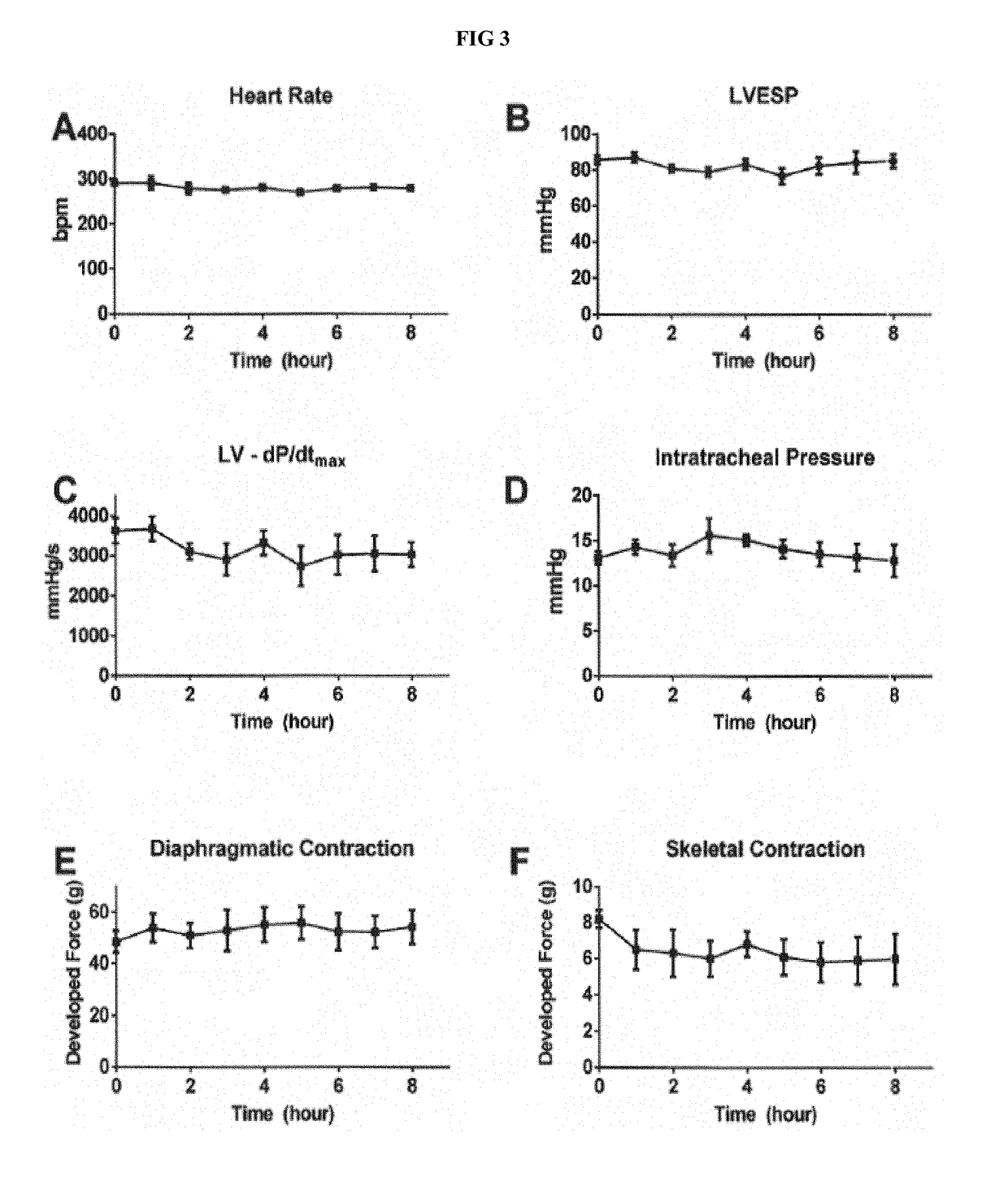Compositions and methods for reducing muscle contraction
a muscle contraction and composition technology, applied in the field of compositions and methods for reducing muscle contraction, can solve the problems of insufficient quantity of current agents in many aspects, inability to be repeated, and rapid onset and extremely short duration of action, so as to reduce muscle contraction and reduce muscle contraction
- Summary
- Abstract
- Description
- Claims
- Application Information
AI Technical Summary
Benefits of technology
Problems solved by technology
Method used
Image
Examples
example 1
MMB4 DMS on Neuromuscular Transmission in the Rat and Rabbit Diaphragm In Situ Preparation
[0088]Applicant investigated model development and assessed neuromuscular (diaphragmatic and skeletal), pulmonary, and cardiovascular alterations to determine effects of administration of both MMB4 DMS and a clinically-relevant comparator (oxime), pralidoxime chloride (2-PAM). Overall, isofluraneanesthetized mechanically-ventilated anesthetized rabbits were instrumented to detect changes in diaphragmatic and skeletal muscle function as well as in systemic / left-ventricular hemodynamics. This in vivo / in situ rabbit preparation was shown to be both stable (for up to 8 hours) and responsive to independent cardio-vascular / neuro-muscular changes triggered by either verapamil or cisatracurium, Therefore, this preparation could be leveraged to detect effects following the administration of mimes.
[0089]Applicant sought to extend ex vivo observations from MMB4 DMS when given to isolated phrenic nerve-dia...
example 2
MMB4 DMS on Neuromuscular Transmission in an In Vitro Rat Phrenic Nerve-Diaphragm Muscle Preparation
[0111]Applicant developed a rat phrenic nerve-diaphragm preparation and assessed the effects of MMB4 DMS on contraction amplitude and potential neuromuscular junction suppression. Using a phrenic nerve-diaphragm muscle preparation, a functional assessment measuring diaphragm muscle contraction was evaluated. A time control to determine stability of the model was evaluated by continuous stimulation measuring for up to 3 hours. An acetylcholinesterase inhibitor (neostigmine) and nicotinic cholinergic receptor agonist (nicotine) served as positive controls for muscle stimulation; while the nicotinic acetylcholine receptor antagonist (d-tubocurarine chloride) served as positive control for muscle inhibition. Muscarine, a muscarinic cholinergic receptor agonist, served as the negative control for muscle stimulation. The same procedure was done with MMB4 DMS (10-7 to 10-2 M) in separate set...
PUM
| Property | Measurement | Unit |
|---|---|---|
| concentration | aaaaa | aaaaa |
| concentration | aaaaa | aaaaa |
| concentration | aaaaa | aaaaa |
Abstract
Description
Claims
Application Information
 Login to View More
Login to View More - R&D
- Intellectual Property
- Life Sciences
- Materials
- Tech Scout
- Unparalleled Data Quality
- Higher Quality Content
- 60% Fewer Hallucinations
Browse by: Latest US Patents, China's latest patents, Technical Efficacy Thesaurus, Application Domain, Technology Topic, Popular Technical Reports.
© 2025 PatSnap. All rights reserved.Legal|Privacy policy|Modern Slavery Act Transparency Statement|Sitemap|About US| Contact US: help@patsnap.com



